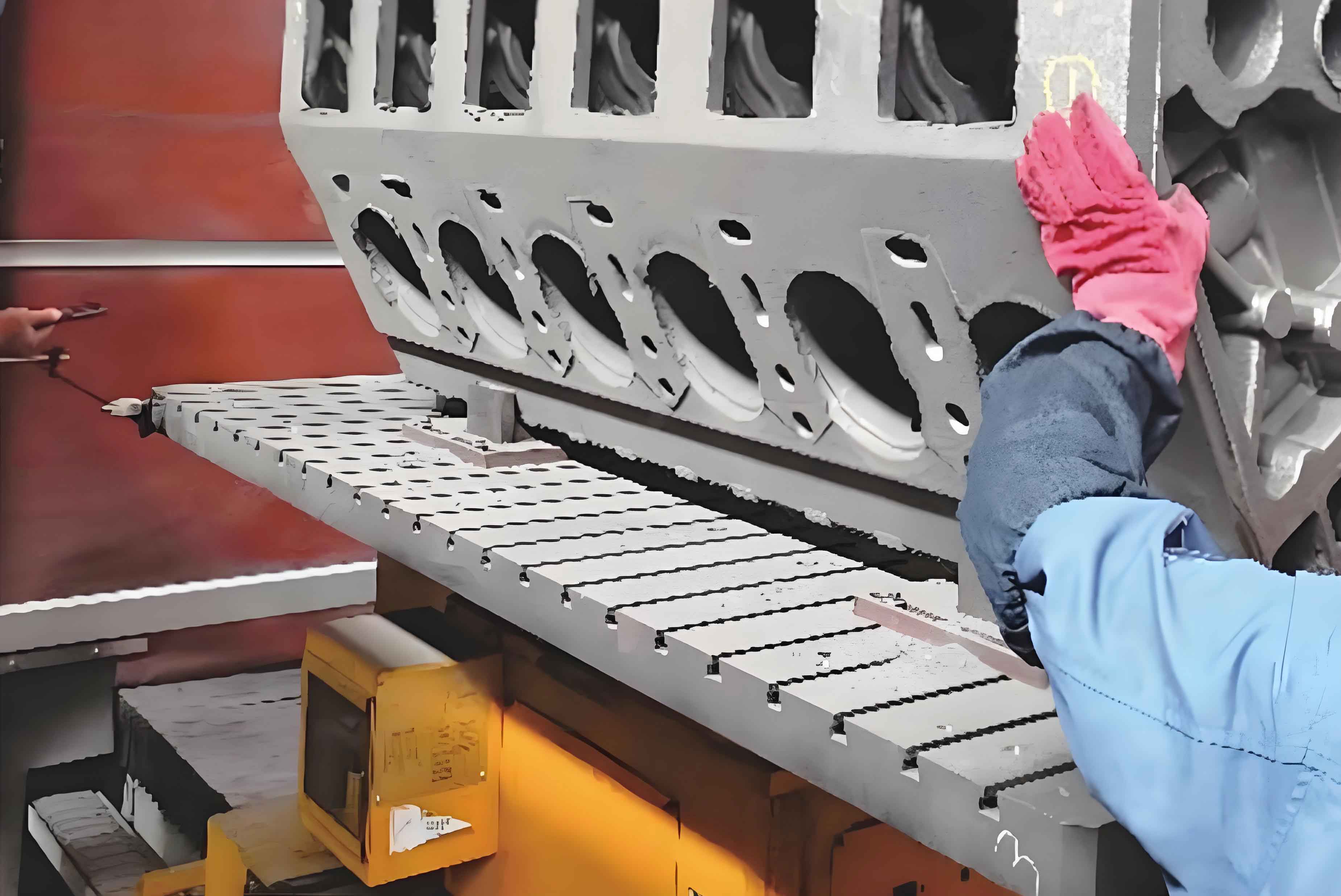In the development and testing of internal combustion engines, ensuring the integrity of the engine cylinder block’s main oil passage is critical to maintaining optimal performance and longevity. During a recent durability test, an oil leakage issue was observed at the threaded oil plug of the main oil passage in an engine cylinder block. This article details the root cause analysis, theoretical calculations, and the successful implementation of countermeasures to resolve the leakage problem.

1. Problem Description and Initial Observations
The oil leakage occurred during an 800-hour bench durability test of an engine cylinder block. The main oil passage utilized an NPT 3/4 threaded oil plug sealed with anaerobic adhesive. Post-test inspection revealed visible oil seepage around the plug (Figure 1). Key observations included:
- Misalignment of Alignment Marks: The oil plug rotated during testing, causing a mismatch between the alignment marks on the plug and the cylinder block.
- Intact Adhesive Layer: Disassembly showed uniform adhesive distribution with no voids or contamination, ruling out insufficient curing or poor application.
2. Root Cause Analysis
2.1 Thermal Expansion and Thread Gap Calculation
The engine cylinder block (cast iron) and oil plug (steel) exhibit different thermal expansion coefficients, leading to a radial gap under operating temperatures. The gap was calculated using:ΔL=L0⋅α⋅ΔTΔL=L0⋅α⋅ΔT
Where:
- ΔLΔL: Thermal expansion (mm)
- L0L0: Initial length (mm)
- αα: Coefficient of thermal expansion (mm/mm·°C)
- ΔTΔT: Temperature change (°C)
Table 1: Calculated Thread Gap Under Thermal Expansion
| Component | αα (mm/mm·°C) | L0L0 (mm) | ΔTΔT (°C) | ΔLΔL (mm) |
|---|---|---|---|---|
| Block (Root) | 0.000023 | 26 | 110 | 0.066 |
| Plug (Tip) | 0.000012 | 26 | 110 | 0.034 |
| Gap | – | – | – | 0.032–0.054 |
This gap exceeded the adhesive’s elongation limit (64% strain, maximum stretch: 0.032 mm), causing adhesive failure.
2.2 Force Analysis of the Oil Plug
Axial forces from oil pressure (F2F2) and elastic deformation (F1F1) generated a rotational torque on the plug:τ=(F1+F2)⋅r⋅tan(θ)τ=(F1+F2)⋅r⋅tan(θ)
Where:
- ττ: Torque (N·m)
- rr: Thread radius (mm)
- θθ: Thread helix angle (°)
This torque induced loosening, exacerbating the gap and adhesive shear failure.
3. Countermeasure Development
3.1 Adhesive Selection Criteria
To address the failure mechanisms, a new adhesive was selected based on:
- Anti-Loosening Performance: Resistance to rotational torque.
- Elongation Rate: Ability to accommodate thermal gaps.
- Shear Strength: Resistance to mechanical stresses.
Table 2: Adhesive Property Comparison
| Property | Original Adhesive | New Adhesive |
|---|---|---|
| Elongation Rate (%) | 64 | 120 |
| Shear Strength (MPa) | 18 | 32 |
| Anti-Loosening Rating | Low | High |
3.2 Alternative Solutions Considered
- Aluminum Oil Plug: Matches thermal expansion with the engine cylinder block but increases cost.
- NPTF Threads: Provides tighter sealing but requires specialized tooling.
These options were deferred due to cost and complexity.
4. Validation and Results
4.1 Bench Test Protocol
The new adhesive was tested under identical conditions:
- Pre-Test Torque: 60 N·m
- Post-Test Torque: 125.9 N·m (vs. 50.5 N·m for original adhesive)
- Duration: 800 hours
Table 3: Test Results
| Metric | Original Adhesive | New Adhesive |
|---|---|---|
| Torque Retention (%) | -15.8 | +109.8 |
| Leakage Observed? | Yes (8 hours) | No |
4.2 Key Findings
- The new adhesive’s higher elongation (120%) accommodated thermal gaps up to 0.054 mm.
- Enhanced shear strength (32 MPa) prevented adhesive failure under cyclic loads.
- Anti-loosening properties eliminated plug rotation.
5. Conclusion
The oil leakage in the main oil passage of the engine cylinder block was attributed to three factors:
- Thermal expansion mismatch between the engine cylinder block and oil plug.
- Inadequate adhesive elongation and shear strength.
- Loosening torque from axial forces.
By selecting a high-performance adhesive with superior elongation, shear strength, and anti-loosening properties, the leakage issue was resolved. This solution underscores the importance of material compatibility and adhesive selection in sealing critical components of the engine cylinder block. Future work will explore cost-effective alternatives, such as optimizing thread geometry or hybrid material designs.
